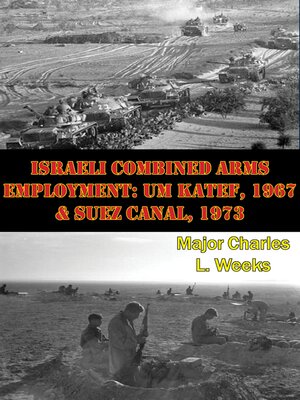Israeli Combined Arms Employment
ebook ∣ Um Katef, 1967 & Suez Canal, 1973
By Major Charles L. Weeks

Sign up to save your library
With an OverDrive account, you can save your favorite libraries for at-a-glance information about availability. Find out more about OverDrive accounts.
Find this title in Libby, the library reading app by OverDrive.



Search for a digital library with this title
Title found at these libraries:
| Library Name | Distance |
|---|---|
| Loading... |
The next desert war the United States fights could be against an enemy more comparable to us in training, motivation, and technology than the recent conflict in the Persian Gulf. The Middle East is a dangerous part of the world where we have limited experience in the use of high technology weapons, or in large-scale combat even given the recent war against Iraq. Since we have limited experience in these areas, this thesis analyzes two of the most recent historical examples of such combat from the 1967 and 1973 Arab-Israeli Wars to reveal conclusions useful to U. S. war fighters. This thesis examines the Battle of Um Katef, Abu Ageila from the 1967 War, and the Sinai Campaign from the 1973 War. They were examined primarily from secondary sources, using the U. S. Army battlefield operating systems, as the framework to evaluate success or failure. The resulting keys to success or reasons for failure were then further evaluated against the four tenets of U. S. Airland Battle Doctrine (Agility, Initiative, Depth, and Synchronization). The result of this investigation is a number of conclusions regarding modern combined arms combat. These conclusions are categorized as strengths or weaknesses and presented as lessons learned. Surprisingly enough, none of the lessons learned proved to be environment specific.







